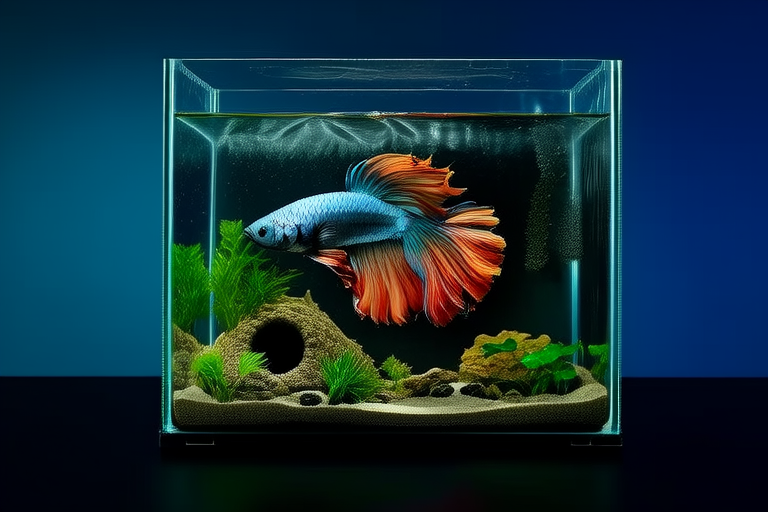DIY Betta Habitat Hacks That Will Amaze You!
Welcome to a world of innovation where you can transform your betta fish’s living environment into a vibrant, enriching space using simple, budget-friendly hacks. These DIY ideas will not only save you money but also provide your betta with a comfortable, stimulating home that promotes its overall health and well-being.
Understanding Betta Behavior and Habitat Needs
Betta fish, native to the shallow waters of Thailand and Cambodia, thrive in environments that mimic their natural habitats. They are labyrinth fish, capable of breathing air directly from the surface, which explains why they often swim near the top of the tank. Bettas are solitary creatures by nature, so it is crucial to avoid housing them with other fish, except for compatible species.
Scientific studies reveal that bettas require specific environmental conditions to flourish. A temperature range of 75-82°F (24-28°C) and a pH level between 6.5 and 7.5 are ideal. They prefer gentle water flow, as strong currents can cause stress. Providing ample hiding spots and open swimming spaces ensures a balanced environment that meets both their physical and psychological needs.
Customizing Aquarium Decorations
Creating a Natural Retreat with Live Plants
Live plants not only beautify your betta’s tank but also improve water quality by absorbing toxins and producing oxygen. Anacharis and Java fern are excellent choices due to their hardiness and adaptability to various water conditions.
- Select the Right Plants: Choose robust, low-maintenance species that can thrive in your betta’s tank. Avoid plants with sharp edges or those that may release harmful substances.
- Preparation: Rinse the plants thoroughly under running water to remove any debris or pesticides. Trim excess roots and leaves to encourage healthy growth within the tank.
- Placement: Position the plants strategically around the tank to create a natural retreat. Ensure there are open areas for swimming and at least one hiding spot per betta.
Pitfall: Overcrowding the tank with plants can lead to poor water circulation and increased algae growth. Always maintain a balance between aesthetics and functionality.
Building DIY Castles and Caves
Constructing castles and caves from materials like PVC pipes and silicone sealant can offer unique hiding spots and enhance the tank’s visual appeal. These structures stimulate exploration and territorial behavior, promoting mental stimulation.
- Materials: Gather PVC pipes, silicone sealant, and aquarium-safe paint.
- Design: Sketch your castle or cave design on paper before starting. This helps visualize the final structure and plan its placement within the tank.
- Assembly: Cut the PVC pipes according to your design and secure them using silicone sealant. Allow the sealant to dry completely before placing the structure in the tank.
- Painting: Once the structure is assembled and dried, apply aquarium-safe paint to enhance its appearance.
Pitfall: Ensure all materials used are non-toxic and safe for aquatic life. Avoid using paints or sealants that emit volatile organic compounds (VOCs).
Creating Natural Water Flow
Simulating natural water currents can be achieved through DIY methods, providing your betta with a more stimulating environment.
DIY Water Wheels
A water wheel can create gentle water movement, simulating the natural flow found in bettas’ native habitats.
- Materials: Collect a small plastic wheel, a motor, and a power source.
- Assembly: Attach the motor to the wheel securely. Ensure the assembly is waterproof and can float in the tank.
- Power Source: Connect the motor to a battery or power adapter. Test the water wheel in the tank to ensure it rotates smoothly and creates a gentle current.
Pitfall: Excessive water movement can cause stress, so monitor the speed of the water wheel carefully. Adjust the power supply as necessary.
Maintaining Optimal Water Conditions Without Expensive Equipment
Keeping the water clean and free from harmful chemicals is essential for your betta’s health. Here are some cost-effective methods to achieve this.
DIY Carbon Filter
A carbon filter can absorb toxins and improve water clarity, extending the time between water changes.
- Materials: Obtain activated carbon and a mesh bag.
- Preparation: Place the activated carbon inside the mesh bag and tie it shut.
- Placement: Secure the bag within the tank, ensuring it does not interfere with the betta’s swimming space.
Pitfall: Replace the carbon periodically to prevent the buildup of toxins. Monitor water parameters closely after adding a new filter.
